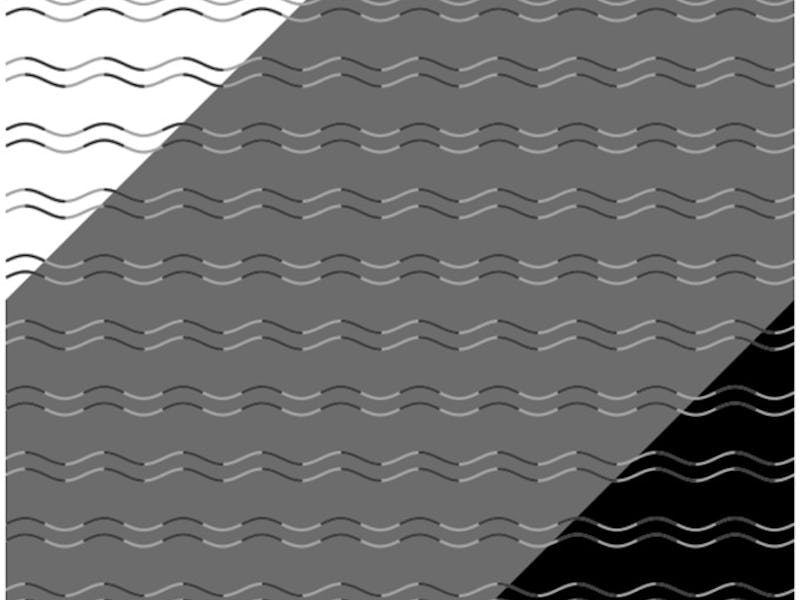New Optical Illusion Discovered by Japanese Scientist Is Totally Baffling
Don't worry, your brain's not broken.

The internet loves an optical illusion, and it seems like people are always on the lookout for new ones. For all you people who like having your mind bent a little bit, you’re in luck: Kohske Takahashi, a psychologist at Chukyo University, Japan, has a new illusion for you. It’s called “curvature blindness,” and it may not be obvious at first.
In this illusion, which he described and explained in the journal i-Perception in November, pairs of wavy lines span the image. These waves, which have consistent peaks and valleys like sine waves, are divided into segments of dark gray and light gray and are laid over a black, white, and gray background.
Some pairs look curvy, while others look more like zig-zags, especially over the gray background. But here’s the thing: They’re all curvy. Take a look for yourself.
The zig-zag lines are actually curves, even though your eyes are blind to the curvature.
In the paper, Takahashi explains the principle behind this illusion: The lines that appear to zig-zag are the ones in which the color changes occur at the peaks and valleys. The abrupt corner created by the cutoff between the dark gray and light gray makes it so the viewer perceives the curve as a sharp angle. This perception competes with the more accurate perception of a gentle curve. He notes that this is somewhat different from a situation in which perception is incorrect, because people really do see it.
“It is notable that observers exactly ‘see’ an illusory zigzag line against a physically wavy line, rather than have an impaired perception,” he writes. “We propose that the underlying mechanisms for the gentle curve perception and those of obtuse corner perception are competing with each other in an imbalanced way and the percepts of corner might be dominant in the visual system.”
In other words, your brain might tend more toward seeing a corner when there’s confusion about whether it’s seeing a corner or a curve.
Another popular illusion involving black-and-white lines.
As we’ve seen with other optical illusions, these phenomena bug us out because we assume the way we see the world is pretty much the way it is. When we find out the way we’re seeing the world is wrong — or at least a little different from the way others see it — it unsettles us with the idea that there’s no actual consensus about reality. While this optical illusion won’t be the next dress illusion, it still makes your eyes cross with perceptual confusion.
The key to believable virtual reality has been discovered.